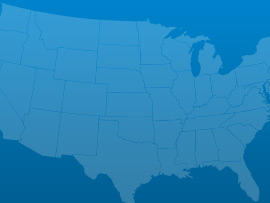The recession brought some stark realities to the condition of transportation infrastructure in Nevada. Prior to the recession, Nevada was a high growth state with increasing sales and property taxes to help fund transportation projects. Nevada was ranked one of the top five states with the best maintained roads. However, growth slowed dramatically, the population of Nevada decreased and tax revenues plummeted along with federal funding.
Another factor to consider is the state gas tax, which hasn’t been increased since 1992. Due to inflation the current 17.65 cents per gallon tax has a purchasing power of only 7.13 cents today. Meanwhile, in the same period construction costs have increased 150% and more fuel efficient cars have reduced gasoline sales. The two largest urban areas in the state – Clark County and Washoe County – received legislative approval to index fuel taxes. Both of those tax programs are now generating increased revenues and hence greater bonding capacity on the order of $435 million in Washoe County and $700 million in Clark County. However, the ability to utilize index fuel taxes in Clark County only lasts for three years and the continuation of the fuel tax indexing will need the approval of voters during the 2016 election year.
The state highway system is a different story. The Nevada Department of Transportation maintains 5,300 miles of state highways, which includes many rural roadways within Nevada. Without an increase in the gas tax since 1992, the state funding levels have stagnated and Federal funding has remained at a similar level the past 5 years. Hence, the maintenance of the existing highway system has fallen behind and the state will need approximately $285 million annually for the next decade to catch up on the current backlog of highway maintenance. The current funding levels provide only 60% to 70% of the required funding to maintain the state highways. This has resulted in an increase in the number of lane miles requiring either an overlay or full rehabilitation from 28% two years ago to 38% currently.
Transit in Nevada primarily consists of bus service in many communities. Both Clark and Washoe counties have been implementing Bus Rapid Transit (BRT) systems during the past decade with much success and increased ridership. Nevada has applied for and received over $60 million from federally funded TIGER Grants in the last 5 years. Both areas have also been changing buses to alternative fuel sources such as electric or compressed natural gas (CNG) to reduce exhaust emissions. Clark County is estimated to need $1.6 billion during the next 20 years to maintain and expand its transit system.
Allow an increase in the gas tax or indexing statewide, which will provide more revenue for bonding capacity and for local match requirements for federal funds. Continue to expand transit programs to increase mobility in the urban and rural areas, and develop options to fund such programs.
 Aviation
Aviation Dams
Dams Drinking Water
Drinking Water Flood Control
Flood Control Schools
Schools Solid Waste
Solid Waste Transportation
Transportation Wastewater
WastewaterA: Exceptional, B: Good, C: Mediocre, D: Poor, F: Failing, ?: Incomplete
Each category was evaluated on the basis of capacity, condition, funding, future need, operation and maintenance, public safety, resilience, and innovation
Aviation
30 public-use airports
Bridges
36 of the 1,853 bridges are structurally deficient
Bridges
$10.70 million in bridge funds came from the Federal Highway Bridge Fund in 2011
Dams
85% of the state regulated dams have an Emergency Action Plan
Dams
150 high hazard dams
Drinking Water
$5.6 billion in drinking water infrastructure needs over the next 20 years
Energy
4.444 gigawatt-hours of renewable energy every year, ranking it 23rd
Hazardous Waste
1 sites on the National Priorities List
Levees
103 miles of levees
Public Parks
$18.8 million of unmet needs for its parks system
Rail
2 freight railroads covering 1,192 miles across the state, ranking 39th nationally by mileage
Roads
4,085 of the state’s 38,567 public roads are major roads, and 2% are in poor condition
Roads
$417.0 million a year in costs to motorists from driving on roads in need of repair, which is $242 /yr per motorist
Schools
$2.5 billion in estimated school infrastructure funding needs
Transit
65.1 million annual unlinked passenger trips via transit systems including bus, transit, and commuter trains
Wastewater
$2.9 billion in wastewater infrastructure needs over the next 20 years

March 03, 2017
As the President’s repeated in his address to Congress his pledge to dramatically increase infrastructure spending to the tune of $1 trillion, various Congressional Committees

March 01, 2017
On Tuesday night, President Trump addressed a joint-session of Congress for the first time in his presidency. Infrastructure was among the many issues he discussed.

February 28, 2017
U.S. motorists set a new record for vehicle miles travelled (VMT) in 2016, driving over 3.2 trillion miles, an increase of 70 billion miles from

February 17, 2017
Romantic dates, the Grammy awards and celebrating black history are not the only milestones of this week; the Oroville dam crisis in California and the